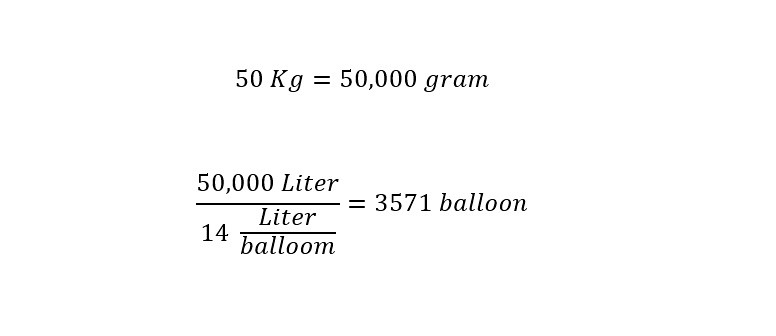Source: BBC News
The photograph is of an oil rig platform that floated ashore after breaking free from a 'tow boat' off the shore in Scotland last week. What was the first thought that arrived in your mind after viewing the picture above? Maybe there was no significant thought. On the other hand, maybe your mind is racing like mine was with follow up questions:
1) How did that get there?
2) How much fuel is still in there?
3) How much has leaked out?
4) How do you dismantle such a large object?
5) How much does the oil platform weigh?
Over the course of a week (and many news cycles), four of the five questions have partial answers. The remaining question is #4 -- how is an oil rig like the drifted oil rig mentioned above properly get dismantled by crews -- in a safe manner? In order to understand the process of dismantling a gigantic structure (like an oil rig), we must understand the dimensions of such a structure. Furthermore, in order to understand the dimensions of an oil rig, a metric needs to be used to compare to oil rig platform to.
How Much Does An Oil Rig Platform Weigh?
If you have been following recent news feeds, there have been various articles detailing the enormous structure that happened to float ashore. Here are a couple still frames of tweets shown below:
In the two pictures above, the size of the gigantic oil rig platform is placed into perspective by the ocean at one side of the oil rig. On the other side is the hillside. This blog post is not about the size and scale of nature (the ocean and hillside -- maybe later). Returning to the oil rig platform that looks small from afar, here is a video (less than 2 minutes) to shed light on the enormous size of the rig. The video shown below is from an 'ABC News' article titled "Massive Oil Rig Washes Ashore in Remote Scotland":
The video above shows an enormous oil rig floating. If you stare closely at the video, the gigantic structure slowly floats displaying the force of the waves pushing the structure in toward the shore. Stop and think for a moment of how powerful the waves must be to push a structure which weighs 17,000-tons into the shore (Source: 'The Sun' news). In order to drive home the point that the oil rig which washed into the shore, here are two more pictures shown below taken from the BBC article:
In the three images above, a human body is shown in each to illustrate the scale. The first time that I saw these pictures, I sat and just thought about the dimensions of the platform. Oil rigs are and asymmetrical shape and should not be towed. New pictures emerge daily from different visual perspectives that amaze me continuously. An example is shown below from "BBC":
Now that the gigantic oil rig platform has been put into perspective.
How do we start to understand the dismantling process of such a structure?
From a perspective of the weight of an object, the oil rig platform weighs around 17,000 tons. In order to understand such a structure, we need a metric. By metric, I mean an object which to compare the structure to with an equivalent weight or an integer value of the weight.
What structure would suffice to use as a metric?
To determine that, first, lets look at the shape of the oil rig. The "Transocean Winner" is defined as a "sub-submersible" oil platform as shown below in the image taken from the "Wikipedia" page for 'Oil Platform':
Source: By Office of Ocean Exploration and ResearchNational Oceanic and Atmospheric Administration (NOAA)
The "Transocean Winner" oil rig is categorized as number 7 or 8 in the image above. In order to find a structure to compare the oil rig to as a metric, we should look for a "tower" of some sort. Do you know of one to compare the oil rig to? If so, write in the comments section and I will write a update post with the appropriate calculation.
How about the Eiffel Tower in France?
Eiffel Tower vs. Transocean Winner?
In order to compare the two enormous objects, the weights of the two need to be known. The Eiffel Tower is shown in an image below take from the 'Wikipedia' page:
Source: Benh LIEU SONG
The Eiffel Tower is enormous. Built for the world fair as a monument for France, the tower is a popular tourist attraction with a visitation center and a restaurant. Furthermore, the structure is made of metal and can serve as an appropriate metric to compare the weight of an oil rig platform. We need a weight for the Eiffel Tower. Lets ask Google.com as shown below:
The weight of the Eiffel Tower is 7,300 tons. At first sight of the value, I was a little surprised to find out that the weight of the oil rig platform (which was reported to be 17,000 tons) was greater than the Eiffel Tower. Since the weights are both expressed in units of 'tons' a direct comparison (division) is possible as shown below:
What does the result mean? The result of the calculation above means that the oil rig floating off of the shore in Scotland weighs just under 3 times the weight of the Eiffel Tower. Therefore, just under 3 Eiffel Towers would be required to match the weight of an oil rig -- like the "Transocean Winner" in the pictures above. Amazing.
Although, when you stop to think about the function of each object, the difference in weight makes sense.
What is the difference in function of the two enormous objects?
The Eiffel Tower serves as a tourist attraction. Not to say that the structure is static. The weather surrounding the structure with height varies tremendously. In order for the Tower to withstand forces of nature, the structure needed to be designed accordingly. For the design of the Eiffel Tower, I defer the reader to the "Wikipedia" page.
As far as the oil rig is concerned, the function is to serve as a platform for drilling oil far beneath the ocean surface. How far you might ask? For this class of oil rigs, the distance is typically around 200 to 10,000 feet. WOW!
You can imagine that the oil rig design needs to be able to withstand the weathering due to the moisture (salt concentration) around the rig. Additionally, the ocean is not static. The ocean is not forgiving either and exerts a tremendous force in all directions with time. Varying based on weather patterns -- which also contributes to the huge weight difference. An additional function is to temporarily store oil in the rig.
Where is the oil stored?
Maybe in a future post, I will answer that in more detail.
How Much Oil Was Stored In The Oil Rig?
After hearing about the accidental occurrence of the oil rig floating ashore, naturally, one might wonder whether there was any residual oil stored in the rig that leaked out into the environment. In order to answer that question, we can look to the news site "BBC" for an answer:
Last week it emerged that the two other tanks had been breached during the grounding and more than 12,000 gallons (56,000 litres) of diesel oil lost.Eight experts scaled the rig at Dalmore beach on Lewis with ropes on Sunday and were able to check the two other tanks.Six more workers are due to join them later this week.Efforts are to be made to pump the diesel oil still in the hull, 137 tonnes, to other tanks above the waterline.
The total amount leaked thus far has been around 12,000-gallons -- which is small by comparison to other blog posts regarding oil spills on this site. None the less, any oil spill is too much to have enter the environment and damage the surrounding beaches or marine life. Too many accidents like these are occurring as a result of "offshore drilling" and need more regulatory oversight.
In the excerpt above, the remaining oil in the 'hull' is around 137 tons.
How many gallons is contained in 137 tons of oil?
To answer the question, a conversion factor needs to be known. The density needs to be known which is a conversion factor from weight to a given volume. A relation of weight and volume of a substance is given by its density. For oil, which is a complex mixture of hydrocarbons of various chain lengths, the density can be approximated.
If Google.com is consulted, the results are listed below:
For the purpose of approximation, we can use the value of 900 kg/m^3 for the density of crude oil. That is the value for the density is 900 kilograms per cubic meter. If the value for the weight of the oil above is inspected, the weight is expressed in units of "tons." In order to calculate a volume in cubic meters, a conversion from units of "tons" to "kilograms" is needed which can be obtained from Google.com. For each ton, there are 907.185 kilograms.
With the conversion factor from units of 'tons' to units of 'kilograms' in hand, the amount of gallons can be calculated as follows:
According to the result, there are 34,480 gallons in 137 tons of crude oil. That is just over 3 times the amount of crude oil that has already leaked out of the oil rig platform according to the news account above. Amazing.
Conclusion...
Given the results of the calculations above, the length of time needed to dismantle the oil rig that washed ashore last week. Looking at the Eiffel Tower in a picture gives me a new respect for the manufacturers of the "Transocean Winner" oil rigs. In the coming weeks, the dismantling process will be fascinating to watch. Hopefully, the news will show the various stages and continue to report about the process. Even though the dismantling process might not be "hot news" -- covering the process is crucial to show the public another perspective of the oil drilling industry.
Until next time, have a great day!








.jpg/800px-Tour_Eiffel_Wikimedia_Commons_(cropped).jpg)













